#Vincent Korda
Explore tagged Tumblr posts
Text
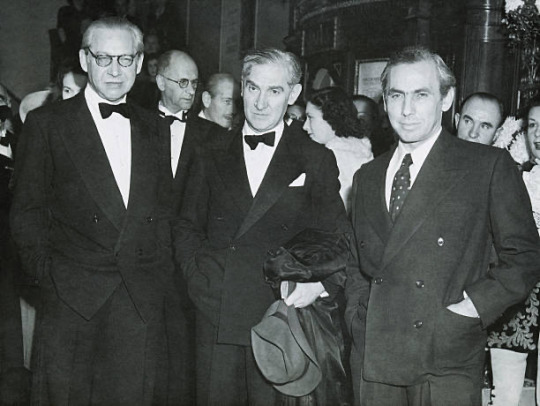
The Korda brothers at the premiere of AN IDEAL HUSBAND at the Carlton Haymarket in London, 1947. (L-R) the film’s director Sir Alexander Korda, Vincent Korda, and Zoltan Korda.
7 notes
·
View notes
Text
"Metal Fatigue:" Allan Holdsworth's Fusion Masterpiece
Introduction: The world of jazz fusion is vast and often complex, populated by musicians who push the boundaries of genre and technique. Among these innovators, Allan Holdsworth stands out as a true pioneer. His 1985 album “Metal Fatigue” is widely regarded as one of the most significant fusion records of the 1980s, a testament to his extraordinary skills and creative vision. This album not only…
#Alan Pasqua#Alex Lifeson#Allan Holdsworth#Biff Vincent#Chad Wackerman#Classic Albums#Dan Humann#Dennis McKay#Eddie Van Halen#Francois Bardol#Fusion#Gary Husband#Gary Wagner#Gary Willis#Jazz History#Jimmy Johnson#Metal Fatigue#Paul Korda#Paul Williams#Robert Feist
1 note
·
View note
Text
SPOOKIES (1986) – Episode 257 – Decades Of Horror 1980s
“We almost got our tuchus plunged!” Almost? Shoot, that would’ve made a perfect scene to go with the farting Muck Men. Join your faithful Grue Crew – Crystal Cleveland, Chad Hunt, Bill Mulligan, and Jeff Mohr – as they discuss Spookies (1986)! Wait. Why haven’t we seen this before?
Decades of Horror 1980s Episode 257 – Spookies (1986)
Join the Crew on the Gruesome Magazine YouTube channel! Subscribe today! Click the alert to get notified of new content! https://youtube.com/gruesomemagazine
Gruesome Magazine is partnering with the WICKED HORROR TV CHANNEL (https://wickedhorrortv.com/) which now includes video episodes of Decades of Horror 1980s and is available on Roku, AppleTV, Amazon FireTV, AndroidTV, and its online website across all OTT platforms, as well as mobile, tablet, and desktop.
(It was going to be) A group of teens go to an abandoned house to party and do battle with spirits and creatures they accidentally release from a strange Ouija board. (Instead, it became) A wicked sorcerer tries to sacrifice a group of people inside his house to use their vitality to keep his wife alive.
Directed by: Thomas Doran & Brendan Faulkner (footage from Twisted Souls); Genie Joseph (as Eugenie Joseph);
Writing Credits: Thomas Doran, Frank M. Farel, & Brendan Faulkner (Twisted Souls footage screenplay); Ann Burgund (additional material) (credited as Joseph Burgund)
Produced by:
Thomas Doran, Frank M. Farel, Brendan Faulkner (producers) (unfinished film Twisted Souls)
Genie Joseph (producer) (credited as Eugenie Joseph)
Michael Lee (executive producer: Miggles Corporation)
Makeup Department:
Jennifer Aspinall (makeup artist/special makeup effects) (credited as Jennifer Aspinal)
Gabriel Bartalos (special makeup effects)
Arnold Gargiulo (special makeup effects) (credited as Arnold Gargiulo II)
Vincent J. Guastini (special makeup effects) (credited as Vincent Guastini)
Nick Santeramo (assistant makeup effects)
Nancy Tong (makeup artist) (credited as Nanxy Tong)
John Dods (prosthetic makeup artist) (uncredited)
Special Effects by:
Ken Brilliant (animation model construction)
John Dods (creator: additional effects/special creature design and animation)
Ken Walker (animation model construction)
John Mathews (creature effects assistant) (uncredited)
Visual Effects by:
Al Magliochetti (special effects photography)
Larry Revene (special effects photography)
Selected Cast:
Peter Dain as Peter
Kim Merrill as Meegan
Nick Gionta as Duke
Joan Ellen Delaney as Linda
Charlotte Alexandra as Adrienne (credited as Charlotte Seeley)
Anthony Valbiro as Dave
Lisa Friede as Carol
Al Magliochetti as Lewis Wilson
Peter Iasillo Jr. as Rich
Soo Paek as The Spider Woman
James M. Glenn as The Grim Reaper
Gabriel Bartalos as Muck Man
Peter Delynn as Muck Man
John Beatty as Muck Man
Robert Epstein as Graveyard Zombie
Felix Ward as Kreon
Maria Pechukas as Isabelle
Dan Scott as Kreon’s Servant
Alec Nemser as Billy
A.J. Lowenthal as Korda/Son of Kreon & Isabelle
Pat Wesley Bryan as Drifter
If Spookies feels like two different movies, it’s because it’s one of those nightmare productions where the “making of” story might be more interesting than the movie itself. Yes, too many cooks spoil the broth and Spookies is solid evidence that too many filmmakers ruin the movie. With production being shanghaied near the beginning of post-production work and half the film reshot, Grue Believers will never know if the original crew’s vision would’ve made a better movie. Throw in some top makeup and effects people early in their careers and the Grue Crew have plenty to fuel their talkabout of this fun, mess of a movie.
At the time of this writing, Spookies is available to stream from Tubi, Shudder, ScreamBox, and AMC+, and on physical media in Blu-ray format in a 2-disc set from Vinegar Syndrome.
Every two weeks, Gruesome Magazine’s Decades of Horror 1980s podcast will cover another horror film from the 1980s. The next episode’s film chosen by Jeff, will be Just Before Dawn (1981), an underappreciated slasher from co-writer/director Jeff Lieberman (Squirm, 1976; Blue SunshineI, 1977) and starring George Kennedy, Chris Lemmon, Deborah Benson, Greg Henry, and Mike Kellin.
Please let them know how they’re doing! They want to hear from you – the coolest, grooviest fans – so leave them a message or comment on the Gruesome Magazine Youtube channel, on the Gruesome Magazine website, or email the Decades of Horror 1980s podcast hosts at [email protected].
Check out this episode!
2 notes
·
View notes
Photo
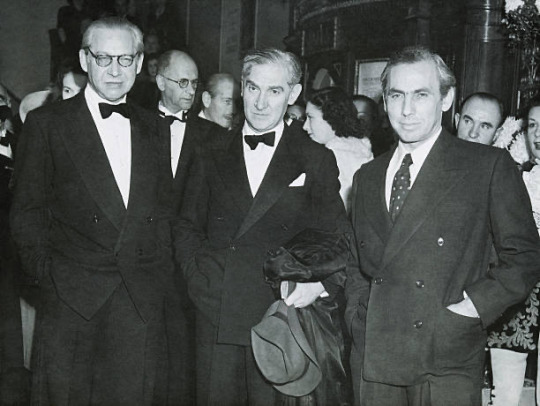
The Korda brothers ( Sir Alexander, Vincent, and Zoltan) at the premiere of An Ideal Husband at the Carlton Haymarket in London, 1947
3 notes
·
View notes
Text
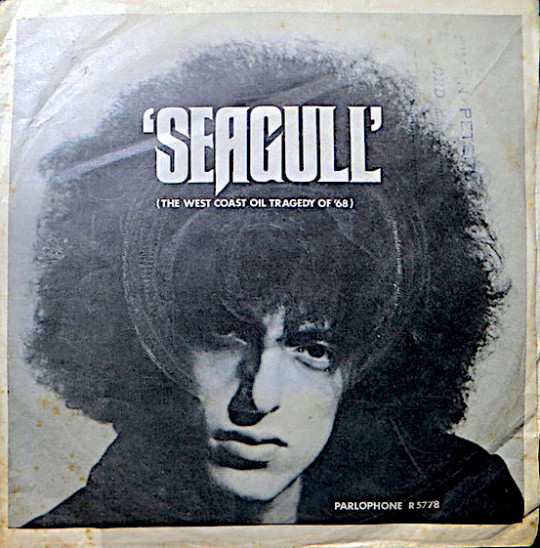


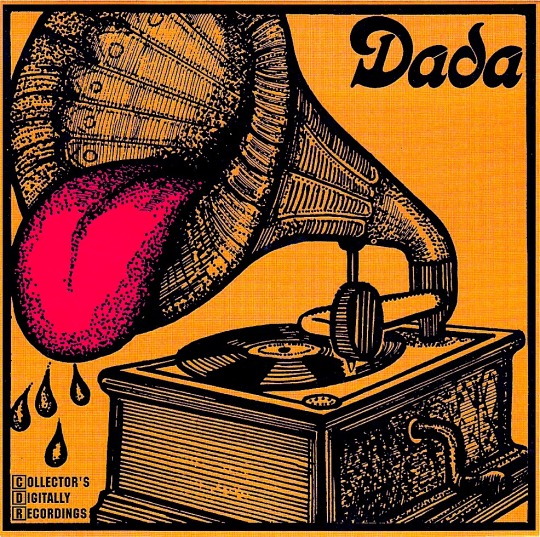

HAPPY BIRTHDAY to Heath Bashnick, Henry Cowell, Mercer Ellington, Jimmy Fortune, the 1818 publication of Mary Shelley’s FRANKENSTEIN, Nina Hagen, Shemp Howard, Terrence Howard, Jimmy Iovine, Rami Jaffee, Anissa Jones, Johnny Knoxville, Nancy Kovack, George Kooymans (Golden Earring), Lisa Loeb, Bobby Lyle, Graham Lyle, Benji Madden, Harvey Mandel, BeachBoystalk Matt, Bobby McFerrin, Steve Mendez, Miff Mole, Angelique Pettyjohn, Astor Piazzolla, Pink Floyd’s 1967 “Arnold Layne” single, Ric Rothwell (Mindbenders), Jan Schelhaas (Caravan), Mark Stein (Vanilla Fudge), Andy Sturmer (Jellyfish), Verdi’s 1851 opera RIGOLETTO, William Vincent Wallace, Adam Wakeman, Raoul Walsh, Bruce Watson (Big Country), Lawrence Welk, Fred Wikkeling, Anton Yelchin, and the under-celebrated actor, producer, and singer-songwriter Paul Korda. He was born in Singapore into a creative family of accomplished entertainers, singers, songwriters, and accomplished musicians. From there his family moved around the world but Paul was schooled in England. Around age 15, stoking his chops as a guitarist-pianist, he intersected professionally with P.P. Arnold, Sandy Denny, Jimi Hendrix, Elton John, The Small Faces, and Cat Stevens—who became one of Paul’s best friends. Paul’s acting career broke out in 1968 when he was cast in the London musical production of HAIR. Concurrently he collaborated on a series of singles with my friend, singer-songwriter Tim a.k.a. Chris Andrews. Here’s an Andrews/Korda track featuring Paul: https://www.youtube.com/watch?v=iPTviPx3d8Y
Around 1970 Paul became an ecological activist and started to release solo albums. He continued to produce and write for numerous artists, most prominently with Roger Daltrey and Frankie Valli. Years later he returned to acting by appearing in PIRATES OF THE CARIBBEAN and SPINAL TAP while becoming an activist for low-income inner-city youth. By all accounts, Paul had constant brainstorms and bright projects in the works, from musicals to non-profits. He might not be a household name, but his music has been heard around the world. Sadly he passed away in 2020. Meanwhile, HB PK and thank you for sharing your huge creative spark.
#paulkorda #catstevens #hair #timandrews #chrisandrews #parlophone #rogerdaltrey #frankievalli #spinaltap #piratesofthecaribbean #activist #birthday #angelface
#Paul Korda#Cat Stevens#Hair#Tim Andrews#Chris Andrews#Parlophone#Roger Daltrey#Spinal Tap#activist#birthday
3 notes
·
View notes
Photo

Bobby Henrey and Ralph Richardson in The Fallen Idol (Carol Reed, 1948)
Cast: Ralph Richardson, Michèle Morgan, Sonia Dresdel, Bobby Henrey, Denis O’Dea, Jack Hawkins, Walter Fitzgerald, Dandy Nichols, Joan Young, Hay Petrie, Dora Bryan. Screenplay: Graham Greene, based on his story. Cinematography: Georges Périnal. Art direction: Vincent Korda. Film editing: Oswald Hafenrichter. Music: William Alwiyn.
The Fallen Idol is usually categorized as a thriller, and it's undeniably suspenseful, but it's really a moral fable in which everyone is ensnared in their own lies. The suspense is generated by the fact that the audience knows the truth. Philippe (Bobby Henrey) is the young son of an ambassador, living in the embassy in London's Belgrave Square. His mother has been recuperating from a long illness in their home country, and when his father goes to see her, Philippe is left in the care of the butler, Baines (Ralph Richardson), and his wife, the housekeeper (Sonia Dresdel). Philippe idolizes Baines, who entertains him with made-up stories about his adventures in Africa -- in fact, he has never been out of England. Mrs. Baines, on the other hand, is strict and fussy, so he has learned to be sneaky about things like the pet snake he is hiding from her. When Mrs. Baines punishes him one day by sending him to his room, Philippe climbs down the fire escape and follows Baines to a cafe, where Baines is meeting with Julie (Michèle Morgan). When Philippe surprises them, Baines pretends that Julie is his niece, and persuades Philippe not to talk about her around Mrs. Baines. But Mrs. Baines has learned that her husband is seeing another woman, and she tells him that she's going away for a few days, then secretly stays behind to spy on him. All of this deception comes to a head with an accidental death that looks a lot like murder, with Philippe as a key witness. But Philippe has been so confused by the lies he's been told and the ones he's been asked to tell, that when the police question him he is in danger of leading them into a serious error of justice. Director Carol Reed brilliantly manages to hold most of the film to Philippe's point of view, giving the audience the double vision of what is actually happening and what Philippe thinks is happening. Nine-year-old Henrey, who had no significant film career afterward, is splendidly natural in the role, and Richardson brings a necessary ambiguity to the part of Baines. The film is also enlivened by Greene's secondary characters, including a chorus of housemaids who comment on the action, a clock-winder (Hay Petrie) who breaks the tension of an interrogation, and a scene at the police station where the cops and a prostitute (Dora Bryan) try to figure out what to do with Philippe, who has run away after the accident, barefoot and in pajamas, and refuses to tell them where he lives.
1 note
·
View note
Video
🌴Rudyard Kipling's Story Jungle Book (1942) Full Movie in English Color HD
Jungle Book is a classic 1942 independent Technicolor fantasy action-adventure movie. The film was made by the Korda brothers, and it is loosely based on Rudyard Kipling's The Jungle Book which was written in 1894. The story focuses on Mowgli, a feral young man kidnapped by villagers who are cruel to the jungle animals, as the village attempts to steal a dead king's treasure. The treasure happens to be cursed. The film was nominated for four Academy Awards. Best Art Direction-Interior Decoration, Color (Vincent Korda, Julia Heron) Best Visual Effects (Lawrence W. Butler, William H. Wilmarth) Best Original Score Best Cinematography Cast Sabu as Mowgli Daniel and David Valdez as Baby Mowgli Joseph Calleia as Buldeo John Qualen as The barber Frank Puglia as The pundit Rosemary DeCamp as Messua Patricia O'Rourke as Mahala Ralph Byrd as Durgaived Faith Brook as an English girl Noble Johnson as Sikh Mel Blanc as Kaa, Gray Brother Martha Wentworth as White Hood Never miss a video. Join the channel so that Mr. P can notify you when new videos are uploaded: https://www.youtube.com/@nrpsmovieclassics
0 notes
Photo
The Thief of Bagdad
T 1940 ‧ Fantasy/Adventure ‧ 1h 46m
The Thief of Bagdad is a 1940 British Technicolor historical fantasy film, produced by Alexander Korda and directed by Michael Powell, Ludwig Berger and Tim Whelan, with additional contributions by William Cameron Menzies and Korda brothers Vincent and Zoltán. The film stars teen actor Sabu, Conrad Veidt, John Justin, and June Duprez. It was released in the US and the UK by United Artists.
Although produced by Alexander Korda's company London Films in London, the film was completed in California due to the outbreak of World War II.
PLOT
A young thief faces amazing monsters to return Bagdad's deposed king to the throne.
Release date: April 11, 1946 (France)
Directors: Ludwig Berger, Tim Whelan, Zoltan Korda, Michael Powell, William Cameron Menzies
Screenplay: Miklós Rózsa, Miles Malleson, Lajos Bíró
Awards: Academy Award for Best Visual Effects, MORE
Adapted from: The Thief of Bagdad
Distributed by: United Artists
Starring
Conrad Veidt Sabu June Duprez John Justin Rex Ingram Mary Morris
The Thief of Bagdad (1940 film) - Wikipedia





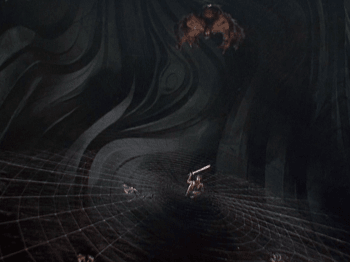



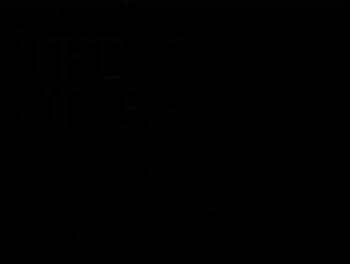
The Thief of Bagdad (1940)
330 notes
·
View notes
Photo

Jungle Book (1942)
For a few years in the early 1940s, a young actor of Indian descent was a household name among American moviegoers. His name was Sabu Dastagir (better known as simply “Sabu”), and he debuted in Robert Flaherty’s The Elephant Boy (1937). Sabu’s performance in The Elephant Boy was enough to convince Hungarian-British producer Alexander Korda to have the young Indian actor star in the 1940 remake of The Thief of Bagdad and, two years later, Jungle Book. Sabu did find film work after his two most iconic motion pictures, but these opportunities proved harder to find in the United States than in Britain. Almost eighty years later, Sabu remains only one of a handful of actors of South Asian descent to achieve even the briefest Hollywood stardom.
As an adaptation of Rudyard Kipling’s The Jungle Book, this is a Korda brothers’ production – eldest brother Alexander produces, middle brother Zoltan directs, and youngest brother Vincent is the art director. Many readers’ point of reference to Kipling’s work is most likely Disney’s animated musical from 1967. Compared to the Disney animated feature, the Korda Jungle Book, distributed by United Artists, is more interested in Mowgli’s interactions with humans, rather than the animals of the jungle. In a time when Technicolor was still relatively new, this Jungle Book contains some of the best use of color in an early 1940s movie. Beyond than the eye-catching palette and then-innovative visual effects, this Jungle Book loses its way anytime Sabu or the wildlife are not on-screen. The original source material, a reflection of Kipling’s imperialist and racist attitudes, also transfers some of those values to this screen adaptation (not related to the plot but in a similarly concerning development, Sabu is the only actor of South Asian descent in a cast almost entirely donning brownface).
In the prologue, an elderly Indian man named Buldeo (Joseph Calleia) regales his fellow villagers and anyone else in the area with tales of the past. When a British woman stop to listen, Buldeo begins the story of Mowgli and how the young boy, raised by wolves and a product of the jungle, came to reintegrate into human society. Unlike Disney’s two Jungle Book adaptations, the Korda Jungle Book cares more for Mowgli’s relationships with humans as opposed to that of the jungle animals. The tiger Shere Khan and the snake Kaa (voiced acted by Mel Blanc) garner plenty of screentime in the film’s closing scenes. But fans of Mowgli’s closest friends – the bear Baloo and the black panther Bagheera – might be disappointed, as they only have glorified cameos. In place of this focus on animals, this film spends ample time on Mowgli’s developing relationships with his mother Messua (Rosemary DeCamp), Buldeo, and Buldeo’s daughter Mahala (Patricia O’Rourke).
The exotified rural India that appears in Jungle Book overshadows most everything about this adaptation, including Sabu’s starring role. That Zoltan Korda, United Artists, and London Films felt no need to cast any other actors of South Asian descent for Jungle Book exemplifies the casual racism that permeates the narrative. The all-white cast playing noble half-savages or passive women is off-putting, fracturing one’s ability to feel as if the events on-screen are not taking place somewhere in sunny Southern California.
Jungle Book’s Indian setting came together at Lake Sherwood near Thousand Oaks, California and what is now known as Sunset Las Palmas Studios in Hollywood, which was then (and still remains) an independent production lot that hosts shoots for various television and cinematic works. Flown onto the sets were hundreds of fauna rented from local farms and zoos and tons of foliage (natural and synthetic), making the jungle scenes – despite the noticeable background or matte painting at times – feel vast and enclosing. And even though it is difficult to distinguish which scenes were shot indoors or outdoors, the amount of water, however improbably still it is in some parts, appearing in the film assists in immersing the audience into this dense environment. For all of the human settlements – in ruins or otherwise – production designers Vincent Korda and Julia Heron (1943’s Hangmen Also Die!, set decorator on 1960’s Spartacus) are not appealing to any sense of cultural understanding appropriateness. Yet the scope of their village and abandoned temple sets are tremendous, with an assist from the incredible matte paintings.
Cinematographers Lee Garmes (1933’s Shanghai Express, 1944’s Since You Went Away) and W. Howard Greene (1937’s A Star is Born, 1951’s When Worlds Collide) use of highly-saturated Technicolor features eye-catching images perfect for this unrealistic reality. Even in the darkest parts of the jungle, the explosion of emerald greens, cool blues, and other earthy colors feels anything but mute, a fantastical version of a rainforest brought to life. The jungle, despite the obvious artificialities in some of the foliage and fauna, almost becomes a character in the Korda Jungle Book. Other artificialities are a shade more convincing, most notably some of the effects required to capture animal movements. Using footage of both mechanical and actual animals alike, Garmes and Greene do their best to hide some strings and wires pulling along stunning mechanical snakes or to allow Bagheera and Shere Khan’s animal actors appear as if they are interacting with the events in the film. For the most dangerous animals that this production features, the black panther and tiger that played Bagheera and Shere Khan, respectively, were separated from the cameras by a glass barrier. This is immaculate visual effects footage, perhaps the film’s saving grace.
youtube
Contrast this with Laurence Stallings’ (1925’s The Big Parade, 1949’s She Wore a Yellow Ribbon) clunker of a screenplay. An inordinate amount of the dialogue is expository and declarative, and too many supporting characters speak in formalities with nary a shred of humor. Jungle Book’s narrative thus feels too formulaic, uptight, and unimaginative. When anyone other than Mowgli or the animals are on-screen, the film is a slog. Kipling’s literary influence on the film might not be apparent in how the humans speak, but it certainly comes through in the most perilous sequences in this movie – and that includes a scene of a forest fire that has to raise questions about animal endangerment on-set at a time with almost no laws against animal mistreatment on film shoots. The Kordas’ Jungle Book works best if seen as an extravagant picture book, but one wishes for Sabu, in a decent performance chockfull of glee, to talk a tad more to the animals.
Hungarian-American composer Miklós Rózsa (1940’s The Thief of Bagdad, 1959’s Ben-Hur) scores perhaps his best body of work owing to elements outside Western classical music. Rózsa’s score to Jungle Book is bolstered by the composer’s detailed research into Hindu music’s chord progressions and modes. His compositions and the orchestration come as close as possible to capturing the harmonic developments of Hindu music as one can while using a Western orchestra. Thus, one can imagine that the music for Jungle Book might be difficult for Indian and non-Indian audiences to appreciate. But as a harmonically complex take on Mowgli’s adventures in the jungle and among humans, this is a bold sound – occupying a space between the melodic demands and orchestration of the West and the wide-ranging tempo and virtuosic harmonic swirls found in classical Hindu music.
The closest analogue to the Kordas’ Jungle Book in this era of Hollywood history must have been the Tarzan series (1932-1948) starring Johnny Weissmuller as the character created by Edgar Rice Burroughs. That, however, is a fraught comparison to make. The Weissmuller Tarzan films were modestly-budgeted and its numerous sequels relied on increasingly laughable contrivances. The Kordas’ Jungle Book is an expensive motion picture leaning on its special effects wizardry while its narrative scarcely makes much of an impression. The premise of Weissmuller and Sabu’s legacies are upon a particular set of roles. By choice, Weissmuller took the roles of jungle-dwelling strongmen. The major Hollywood studios typecasted Sabu – against his wishes – as the urchin, usually a jungle-dweller, from an exotic Asian locale.
This Jungle Book is, for an older generation, a foundational film of their childhood (although I reject any attempts to label this as a children’s film) and an unmitigated technical achievement. In numerous ways, it is also a prime example of how Hollywood viewed Asian influences and actors of Asian descent for decades to come.
My rating: 6/10
^ Based on my personal imdb rating. My interpretation of that ratings system can be found in the “Ratings system” page on my blog (as of July 1, 2020, tumblr is not permitting certain posts with links to appear on tag pages, so I cannot provide the URL).
For more of my reviews tagged “My Movie Odyssey”, check out the tag of the same name on my blog.
#Jungle Book#Zoltan Korda#Alexander Korda#Sabu#Joseph Calleia#John Qualen#Frank Puglia#Rosemary DeCamp#Patricia O'Rourke#Ralph Byrd#Mel Blanc#Lee Garmes#W. Howard Greene#Rudyard Kipling#Vincent Korda#Julia Heron#Lawrence W. Butler#William H. Wilmarth#TCM#My Movie Odyssey
30 notes
·
View notes
Text
Bugsident Fabvil: Who is What?
This is my huge list of Resident Evil characters and how I would draw them if they were a Bug in the Bug Fables Universe. Why am I doing this? Because I’m a little obsessed with both games and the thought won’t leave my brain. Keep in mind that I have not beaten every game in the series: I haven’t played all the spinoffs, for example. For those reasons (as well as me just generally being a stoopit) some notable characters may not be on this list. I intend to come back to this post and edit it when I draw more of these ideas (if a name has a * next to it that means I’ve drawn said character as said bug), and maybe in one of those updates I’ll add one or more of the characters I forgot. Hope you lot like this idea too.
(Also, is a little spoiler-y for several RE titles, keep that in mind. Finally, keep in mind that this is long as hell.)
Resident Evil
Chris Redfield - Cricket*
Jill Valentine - Ant*
Rebecca Chambers - Honeybee*
Barry Burton - Beetle*
Richard Aiken - Wasp
Enrico Marini - Beetle
Forrest Speyer - Termite
Albert Wesker - Wasp*
Lisa Trevor - Earwig
Resident Evil 2
Claire Redfield - Cricket*
Leon S. Kennedy - Moth*
Ben Bertolucci - Mosquito
Brian Irons - Hornet
Marvin Branaugh - Wasp
Robert Kendo - Ladybug
Emma Kendo - Ladybug
Ada Wong - Grasshopper
HUNK - Wasp
Sherry Birkin - Plasterer Bee
William Birkin - Plasterer Bee
Annette Birkin - Plasterer Bee
Resident Evil 3
Carlos Oliveira - Termite *
Mikhail Viktor - Termite
Nikolai Zinoviev - Termite *
Brad Vickers - Ant *
Dario Rosso - Butterfly
Tyrell Patrick - Stickbug
Nemesis - Mantis *
Resident Evil 4 -
Ashley Graham - Beefly
Ramon Salazar - Cicada
Bitores Mendez - Disguised as a Roach, is actually a Centipede
Jack Krauser - Moth
Osmund Saddler - Firefly
Ingrid Hunnigan - Termite
Luis Sera - Grasshopper
The Merchant - Grasshopper
Resident Evil 5 -
Sheva Alomar - Stag Beetle
Josh Stone - Stag Beetle
Excella Gionne - Moth
Ricardo Irving - Honeybee
Oswell E. Spencer - Roach
Resident Evil 6
Helena Harper - Butterfly
Deborah Harper - Butterfly
Piers Nivans - Cricket
Jake Muller - Wasp
Adam Benford - Roach
Ustanak - Beetle
Derek C. Simmons - Fly
Carla Radames - Grasshopper
Carla Pre-Adaification- Mantis
Resident Evil 7
Ethan Winters - Moth
Mia Winters - Moth
Jack Baker - Silverfish
Marguerite Baker - Silverfish
Lucas Baker - Silverfish
Zoe Baker - Silverfish
Joe Baker - Silverfish
Peter Walken - Cicada
Andre Stickland - Mantis
Clancy Jarvis - Damselfly
Eveline - Earwig
Resident Evil 8
Alcina Dimitrescu - Wasp Queen *
Bela, Daniella, and Cassandra Dimitrescu - Wasp “Princess”
Donna Beneviento - Termite
Angie - Termite
Salvatore Moreau - Damselfly
Karl Heisenberg - Roach
Mother Miranda - Earwig
Rosemary Winters - Moth (Caterpillar for most of the story)
The Duke - Bumblebee
Resident Evil 0
Billy Coen - Leafbug
James Marcus - Roach
Resident Evil: Code: Veronica
Alfred Ashford - Dragonfly
Alexia Ashford - Dragonfly
Alexander Ashford - Dragonfly
Steve Burnside - Cicada
Rodrigo Juan Raval - Cricket
Resident Evil Revelations
Parker Luciani - Ladybug
Jessica Sherawat - Honeybee
Quint Cetcham - Lemon Fruity Bug
Keith Lumley - Lime Fruity Bug
Clive R. O’Brian - Termite
Morgan Lansdale - Roach
Jack Norman - Mantis *
Raymond Vester - Stickbug
Rachel Foley - Ant
Resident Evil Revelations 2
Moira Burton - Beetle
Natalia Korda - Moth
Pedro Fernandez - Cicada
Gabriel Chavez - Mantis
Gina Foley - Ant
Neil Fisher - Cricket
Alex Wesker - Wasp
Evgeny Rebic - Ladybug
Resident Evil: The Umbrella Chronicles
Sergei Vladimir - Mantis
Resident Evil: The Darkside Chronicles
Manuela Hidalgo - Grasshopper
Javier Hidalgo - Grasshopper
Resident Evil: Survivor
Ark Thompson - Moth
Lotte Keith - Cricket
Lily Keith - Cricket
Vincent Goldman - Wasp
Andy Holland - Bumblebee
UT Commander - Mosquito
#no I'm not tagging all those names are you crazy?#also if you've got suggestions on who could be what for characters not on this list feel free to give I'd love to hear them!#bug fables#resident evil
16 notes
·
View notes
Text
Trailblazing Black Actors Canada Lee and James Edwards By Raquel Stecher
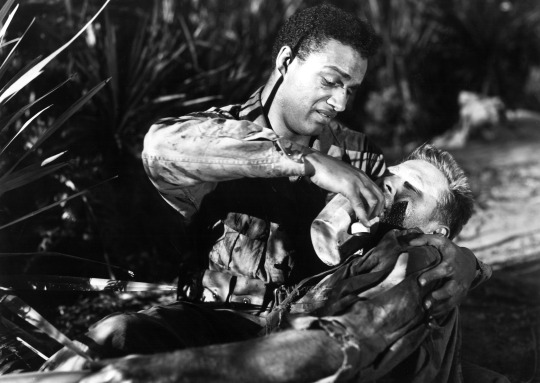
Canada Lee and James Edwards may not be household names, but they deserve to be honored for being trailblazers. These Black actors defied stereotypes and fought for dignified roles on stage and the big screen. They refused to play servants, opting for better roles than their predecessors had been given. And, they both had significant roles in what film historian Donald Bogle calls the four “problem pictures” of 1949: Lee in LOST BOUNDARIES and Edwards in HOME OF THE BRAVE. Both men were ahead of their time yet tragically died far too soon. Let’s take a look at the lives of these two extraordinary individuals.
From a young age, Canada Lee rebelled against the concept of living a normal humdrum life. He wanted to be someone extraordinary. Lee studied violin and piano as a kid with hopes of becoming a musician. When that didn’t pan out, the restless Lee ran away from home at the tender age of 14 to become a jockey. He abandoned this career when he grew too tall for the sport. His next calling found him in the boxing ring, and by the age of 19, he was a professional fighter. He had a successful career as a lightweight and welterweight boxing champion until a blow to the head detached his retina causing him to lose vision in one eye. It was then that he found his calling at the Federal Theatre Project in Harlem during the late 1930s.
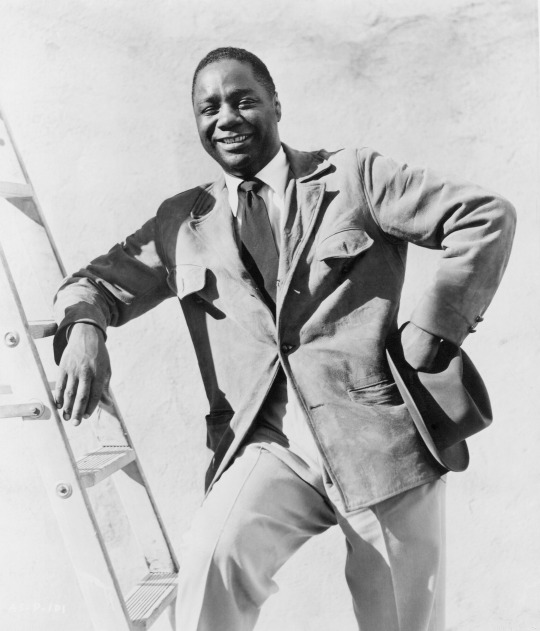
Lee proved to be an excellent actor, and with the guidance of Orson Welles, he was cast in a highly publicized all-Black production of Macbeth. He found success both on and off-Broadway in productions of Anna Lucasta, South Pacific and The Tempest. His breakout performance in Native Son put Lee on the map and Hollywood soon came calling. Lee only appeared in five films, including two films where he could put his boxing skills to good use: KEEP PUNCHING (’39) and BODY AND SOUL (’47). According to the website Black Past, “Canada Lee declared that he would only take roles that educated society about race and enhanced the image of African Americans.”
For Alfred Hitchcock’s LIFEBOAT (’44), he tweaked the dialogue to make his character less of a stereotype. He had a minor role in LOST BOUNDARIES as the understanding cop who guides a young mixed-race man. The film broke ground for tackling the difficult subject of African Americans passing as white. For his last film role, Lee and co-star Sidney Poitier were smuggled into South Africa by director Zoltan Korda for the production of CRY, THE BELOVED COUNTRY (’51) during the early days of Apartheid. Always proud of his West Indian roots, Lee became an outspoken civil rights activist. This made him a target of the House of Un-American Activities Committee investigation. Many believe that his fatal heart attack at 45 years old was the result of his being persecuted for his political beliefs.
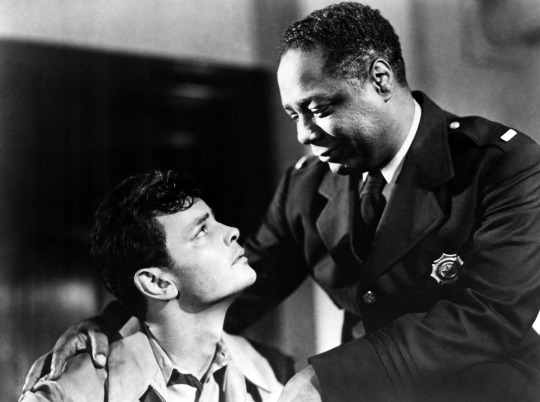
Much like Lee, James Edwards transcended stereotypical Black roles on screen. Edwards served as first lieutenant in the Army during WWII. After a particularly bad car accident that damaged his face and vocal cords, Edwards returned to the U.S. and started training in both public speaking and acting. He earned a master’s degree in drama from Northwestern University and became part of the same acting group, the Federal Theatre Project, as Lee. He made a name for himself on Broadway with the principal part in the play Deep Are the Roots.
Edwards then moved to Los Angeles where he started an acting school and got his start in the film industry. His silver screen debut was in Robert Wise’s film noir THE SET-UP (’49). That same year, Edwards landed one of the lead roles in HOME OF THE BRAVE, a WWII film about racism and psychological trauma. It proved to be his breakthrough performance but is also credited for paving the way for other Black actors, like Sidney Poitier, to take more substantial roles in future productions.
About his performance in HOME OF THE BRAVE, Bogle wrote, “his tension, restlessness, sensitivity and admirable attempt to connect to or at least understand a white world that has continually rejected him make this a fascinating movie.” Edwards often played Black soldiers in war films throughout his acting career. He also worked with top directors in big productions like Stanley Kubrick’s THE KILLING (’56), John Frankenheimer’s THE MANCHURIAN CANDIDATE (’62), Vincente Minnelli’s THE SANDPIPER (’65) and Franklin J. Schaffner’s PATTON (’70). When he wasn’t acting or helping fellow actors master their craft, Edwards worked as a freelance screenwriter for film and television and was a published novelist. He suffered a fatal heart attack at the age of 51, just as he was preparing for a new role.
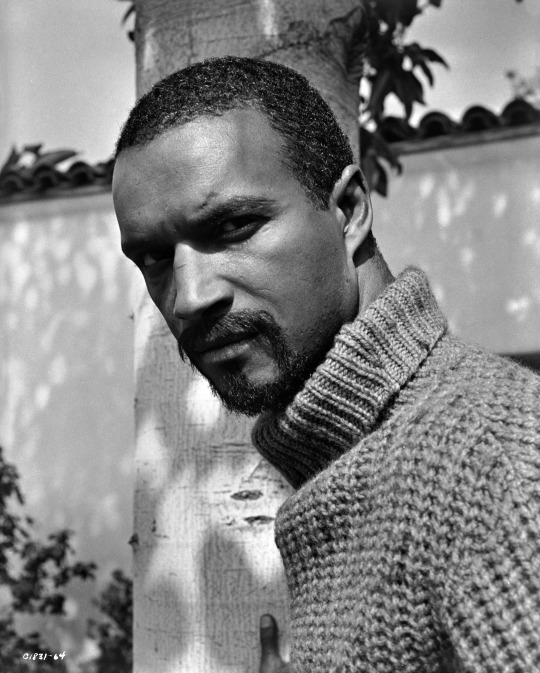
Both Lee and Edwards were able to rise above stereotypes to portray more authentic characters on screen. While Lee had a short film career and Edwards was often relegated to minor characters in his movies, they both proved to be pioneers that fought against the limitations Hollywood imposed on them. Their fight paved the way for Black actors to receive quality roles in film.
#James Edwards#Canada Lee#Black actors#Hollywood Black#Lost Boundaries#Home of the Brave#1949#Federal Theatre Project#TCM#Turner Classic Movies
83 notes
·
View notes
Text
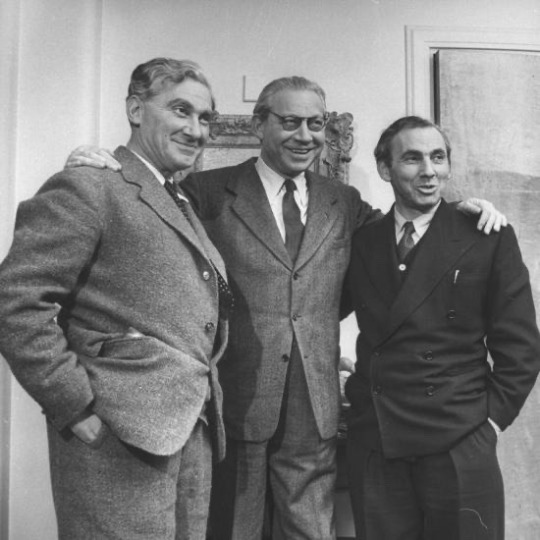
Alexander Korda with his brothers Vincent Korda and Zoltan Korda
5 notes
·
View notes
Text


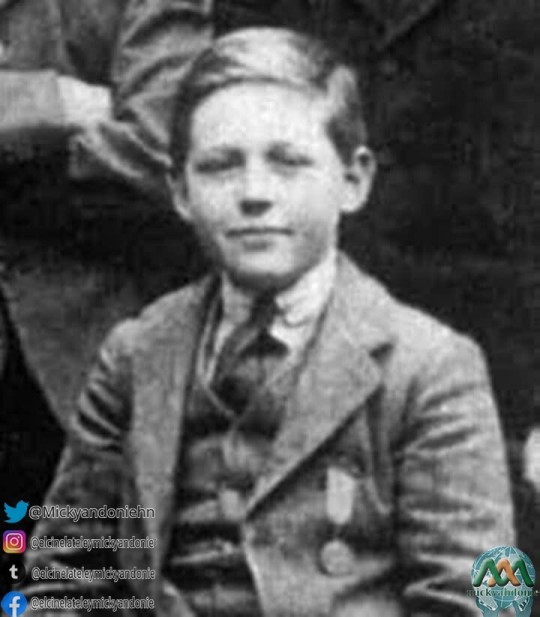
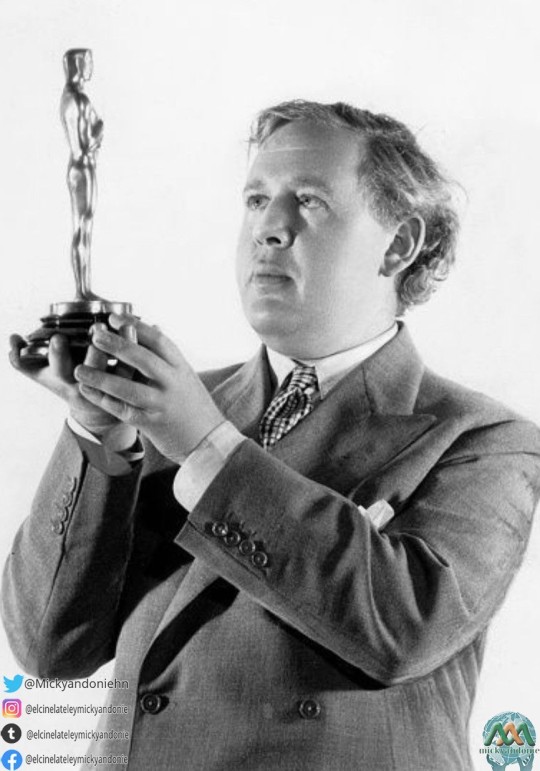
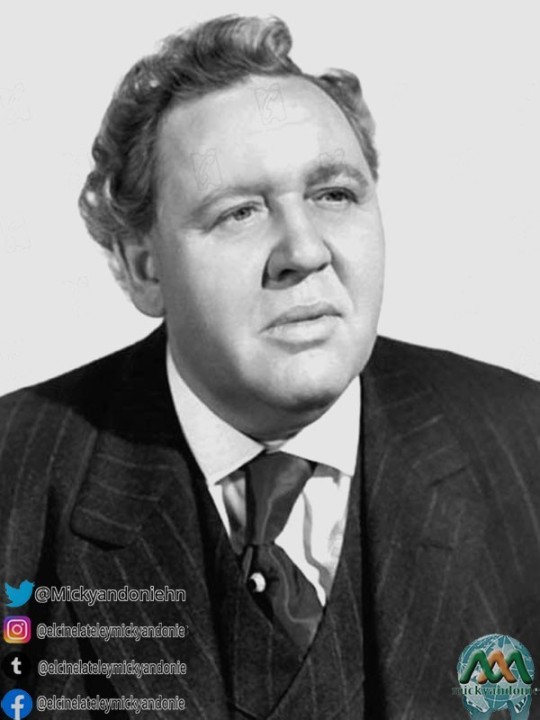
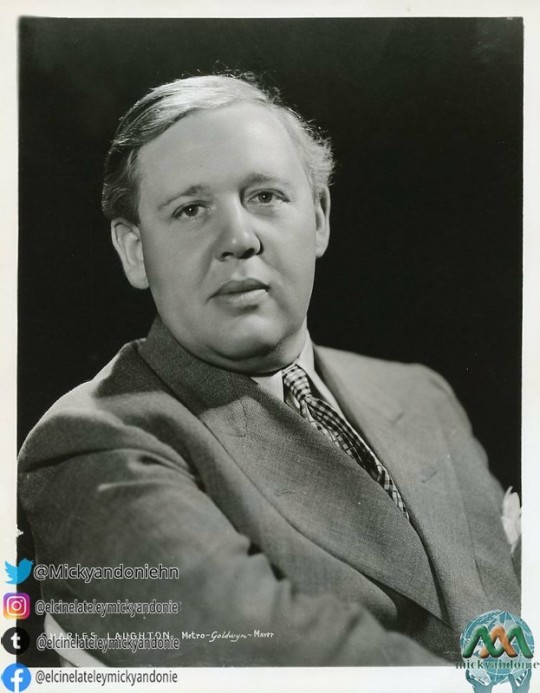

Charles Laughton.
Filmografía
Películas
- Bluebottles, The Tonic, Daydreams (1928) Dir.: Ivor Montagu
- Piccadilly (1929) Dir.: Ewald Andrea Dupont.
- Wolves (1930).
- Down River (1931) Dir. Peter Godfrey
-El caserón de las sombras (The Old Dark - House, 1932) Dir. James Whale
- Entre la espada y la pared (The Devil and the Deep, 1932) Dir. Marion Gering
- Justicia divina/El asesino de Mr. Medland (Payment Deferred, 1932) Dir. Lothar Mendes
- El signo de la cruz (The Sign of the Cross, 1932) Dir. Cecil B. De Mille
- Si yo tuviera un millón (If I Had a Million, 1932) Dirs. Ernst Lubitsch, Norman Taurog, Stephen Roberts, Norman McLeod, James Cruse, William A. - Seiter y H. Bruce Humberstone
- La isla de las almas perdidas (Island of Lost Souls, 1932) Dir. Erle C. Kenton
- La vida privada de Enrique VIII (The Private Life of Henry VIII, 1933) Dir. Alexander Korda
- White Woman (1933) Dir. Stuart Walker
- The Barretts of Wimpole Street (1934) Dir. Sidney Franklin
- Nobleza obliga (Ruggles of Red Gap, 1935) Dir. Leo McCarey
- Los miserables (Les Misérables, 1935) Dir. Richard Boleslawsky
- Rebelión a bordo (Mutiny on the Bounty, 1935) Dir. Frank Lloyd
- Rembrandt (Rembrandt, 1936) Dir. Alexander Korda
- Yo, Claudio (I, Claudius, 1937) Dir. Joseph von Sternberg.
- Bandera amarilla (Vessel of Wrath, 1938) Dir. Eric Pommer (Laughton es actor y coproductor de esta película).
- Las calles de Londres (St. Martin's Lane, 1938) Dir. Tim Whelan (Laughton es actor y coproductor de esta película).
- La posada de Jamaica (Jamaica Inn, 1939) Dir. Alfred Hitchcock (Laughton es actor y coproductor de esta película).
- Esmeralda, la zíngara (The Hunchback of Notre Dame, 1939) Dir. William Dieterle
- Laughton en la película Ellos sabían lo que querían (1940), con Carole Lombard y Frank Fay.
- They Knew What They Wanted (1940) Dir. Garson Kanin
- Casi un ángel (It Started with Eve, 1941) Dir. Henry Koster
- Se acabó la gasolina (The Tuttles of Tahiti, 1942) Dir. Charles Vidor
- Seis destinos (Tales of Manhattan, 1942) Dir. Julien Duvivier
- Stand by for Action (1943) Dir. Robert Z. Leonard
- Forever and a Day (1943) Dirs. René Clair, Edmund Goulding, Cedric Hardwicke, Frank Lloyd, Victor Saville.
-Esta tierra es mía (This Land Is Mine, 1943) Dir. Jean Renoir
- The Man from Down Under (1943) Dir. Robert Z. Leonard
- The Canterville Ghost (1944) Dir. Jules Dassin
- El sospechoso (The Suspect, 1944) Dir. Robert Siodmak
- El capitán Kidd (Captain Kidd, 1945) Dir. Rowland V. Lee
- Su primera noche (Because of Him, 1946) Dir. Richard Wallace
- Arco de triunfo (Arch of Triumph, 1947) Dir. Lewis Milestone
- El reloj asesino (The Big Clock, 1947) Dir. John Farrow
- El proceso Paradine (The Paradine Case, 1948) Dir. Alfred Hitchcock
- On our Merry way/A Miracle can Happen (1948) Dirs. King Vidor, Leslie Fenton, John Huston, George Stevens.
- The Girl from Manhattan (1948) Alfred E. Green
- Soborno (The Bribe, 1949) Dir. Robert Z. Leonard
- El hombre de la torre Eiffel (The Man on the Eiffel Tower, 1949) Dir. Burgess Meredith (codirectores no acreditados: Charles Laughton y Franchot Tone).
- No estoy sola (The Blue Veil, 1951) Dir. Curtis Bernhardt
- The Strange Door (1951) Dir. Joseph Pevney
- Cuatro páginas de la vida (O. Henry's Full House, 1952) Dir. Henry Koster
- Abbott and Costello Meet Captain Kidd (1952) Dir. Charles Lamont
- Salomé (Salome, 1953) Dir. William Dieterle
- La reina virgen (Young Bess, 1953) Dir. George Sidney
- El déspota (Hobson's Choice, 1954) Dir. David Lean
- La noche del cazador (The Night of the Hunter, 1954) Dir. Charles Laughton (no aparece como actor en la película).
T- estigo de cargo (Witness for the Prosecution, 1957) Dir. Billy Wilder
- Bajo diez banderas (Sotto dieci bandiere, 1960) Dir. Diulio Colletti
Espartaco (Spartacus, 1960) Dir, Stanley Kubrick
- Tempestad sobre Washington (Advise and Consent, 1962) Dir. Otto Preminger.
Documentales
- The Epic That Never Was (1965). Dirigido por Bill Duncalf y presentado por Dirk Bogarde. Documental de la BBC sobre el rodaje de I, Claudius con diversas escenas acabadas. (VHS, DVD).
- Callow's Laughton (1987). Documental de la Yorkshire TV-ITV dirigido por Nick Gray y presentado por Simon Callow sobre Charles Laughton.
- Charles Laughton Directs The Night of the Hunter (2002). Documental dirigido por Robert Gitt a partir de tomas descartadas de la Película.
Teatro
Debut teatral (1913). Stonyhurst College, Reino Unido
- The Private Secretary per Charles Hawtrey
Teatro amateur (hasta 1925). Scarborough, Reino Unido
- The Dear Departed por Stanley Houghton
- Trelawney of The Wells por Arthur Wing Pinero
- Hobson's Choice por Harold Brighouse
1926
- The Government Inspector. por Nicolai Gogol. Dir. Theodore Komisarjevsky
- Los puntales de la sociedad por Henrik Ibsen. Dir. Sybil Arundale
- El jardín de los cerezos por Antón Chéjov. Dir. Theodore Komisarjevsky
- Las tres hermanas por Antón Chéjov. Dir. Theodore Komisarjevsky
- Liliom por Ferencz Molnar. Dir. Theodore Komisarjevsky
1927
- The Greater Love por James B. Fagan. Dir. James B. Fagan y Lewis Casson
- Angela por Lady Bell. Dir. Lewis Casson
Vestire gli ignudi por Luigi Pirandello. Dir. Theodore Komisarjevsky
- Medea por Eurípides. Dir. Lewis Casson
- The Happy Husband por Harrison Owen. Dir. Basil Dean
- Paul Y por Dimitri Merejovski. Dir. Theodore Komisarjevsky
- Mr. Prohack por Arnold Bennet y Edward Knoblock. Dir. Theodore Komisarjevsky
1928
- A Man with Red Hair por Benn W. Levy, a partir de la novela de Hugh Walpole. Dir. Theodore Komisarjevsky
- The Making of an Immortal por George Moore. Dir. Robert Atkins
- Riverside Nights por Nigel Playfair y A.P. Herbert. Dir. Nigel Playfair
- Alibi per Michael Morton, a partir de la novela de Agatha Christie. Dir. Gerald duMaurier
- Mr. Pickwick por Cosmo Hamilton y Frank C. Reilly, a partir de la novela de Charles Dickens. Dir. Basil Dean
1929
- Beauty por Jacques Deval (adapt. inglesa: Michael Morton). Dir. Felix Edwardes
- The Silver Tassie por Sean O'Casey. Dir. Raymond Massey
1930
- French Leave por Reginald Berkeley. Dir. Eille Norwood
- On the Spot por Edgar Wallace. Dir. Edgar Wallace
1930
- Payment Deferred por Jeffrey Dell, a partir de la novela de C.S. Forrester. Dir. H.K. Ailiff
1931
-Gira americana (Chicago y Nueva York) de Payment Deferred y Alibi (esta última retítulada The Fatal Alibi y dirigida por Jed Harris).
Old Vic: temporada 1933-34. Londres. Reino Unido. Todas las obras dirigidas por Tyrone Guthrie.
El jardín de los cerezos por Antón Chéjov. Dir. Charles Laughton
1951-52 Estados Unidos y Reino Unido (Gira).
Don Juan in Hell de Man and Superman por George Bernard Shaw. Dir. Charles Laughton.
1953 Estados Unidos (Gira).
John Brown's Body por Stephen Vincent Benet. Dir. y Adaptación: Charles Laughton (no apareció como actor).
1954 Estados Unidos (Gira).
The Caine Mutiny Court Martial por Herman Wouk, a partir de su novela. Dir. Charles Laughton (no apareció como actor).
1956 Nueva York, Estados Unidos.
Major Barbara por George Bernard Shaw. Dir. Charles Laughton
1956 Londres, Reino Unido
The Party por Jane Arden. Dir. Charles Laughton
1959 Stratford-upon-Avon, Reino Unido
El sueño de una noche de verano por William Shakespeare. Dir. Peter Hall
El rey Lear por William Shakespeare. Dir. Glen Byam Shaw.
Créditos: Tomado de Wikipedia
https://es.wikipedia.org/wiki/Charles_Laughton
#HONDURASQUEDATEENCASA
#ELCINELATELEYMICKYANDONIE
4 notes
·
View notes
Text
Inspiring quotes from famous folks to get you on the right track

If you are looking for some positive inspirational quotes then look no further than these lines curated by the Spiritti review team.
“You don’t have to see the whole staircase, just take the first step.” – Martin Luther King Jr.
“I’ve missed more than 9,000 shots in my career. I’ve lost almost 300 games. 26 times I’ve been trusted to take the game winning shot and missed. I’ve failed over and over and over again in my life. And that is why I succeed.” – Michael Jordan
“Obstacles don’t have to stop you. If you run into a wall, don’t turn around and give up.” – Michael Jordan
“One way to keep momentum going is to have constantly greater goals.” – Michael Korda
“There will be obstacles. There will be doubters. There will be mistakes. But with hard work, there are no limits.” – Michael Phelps
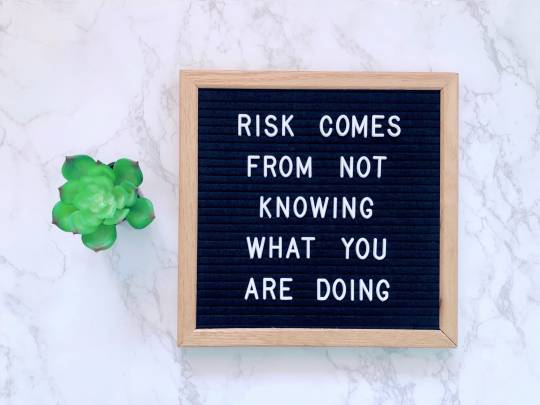
“You can’t put a limit on anything. The more you dream, the further you get.” – Michael Phelps
“To be successful you must accept all challenges that come your way. You can’t just accept the ones you like.” – Mike Gafka
“It isn’t the mountains ahead to climb that wear you out; it’s the pebble in your shoe.” – Muhammad Ali
“The starting point of all achievement is desire.” – Napoleon Hill
“Whatever the mind of man can conceive and believe, it can achieve.” – Napoleon Hill
“Believe in yourself! Have faith in your abilities! Without a humble but reasonable confidence in your own powers you cannot be successful or happy.” – Norman Vincent Peale

“The number one reason people fail in life is because they listen to their friends, family, and neighbors.” – Napoleon Hill
“Change your thoughts and you change your world.” – Norman Vincent Peale
“Find a victory in every defeat to remain hopeful, and find a defeat in every victory to remain humble.” – Orrin Woodward
“What seems to us as bitter trials are often blessings in disguise.” – Oscar Wilde
“Only put off until tomorrow what you are willing to die having left undone.” – Pablo Picasso
For more great inspirational reads and eBooks, check out Spiritti.
1 note
·
View note
Photo
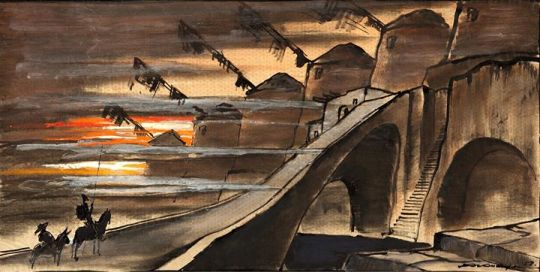
Vincent Korda (1897 – 1979) Don Quijote (1958) https://ift.tt/2Uynkb6 June 11, 2020 at 11:57PM +visit our fellow Goethepunk art page
6 notes
·
View notes
Photo
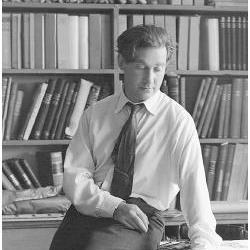
Vincent Koda (pictured) and Julia Herron were nominated for an Academy Award for Best Art Direction, Interior Decoration (Black-and-White) for That Hamilton Woman (1941).
0 notes